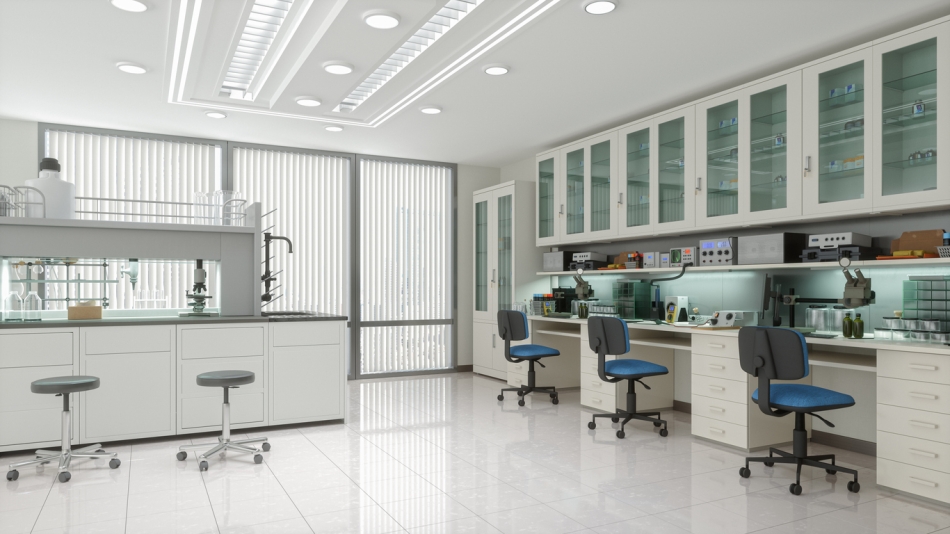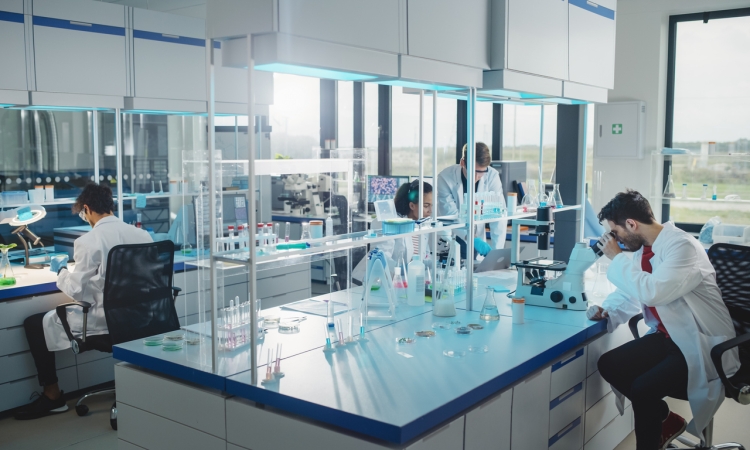Optimal workflow and productivity are the keys to success in a research or science lab. The right laboratory layout will maximize efficiency, meet safety and accessibility standards, and keep researchers both safe and comfortable. Whether you’re preparing to move to a new facility or redesigning a current one, there are important factors to consider to ensure the development of an efficient and productive space.
5 essential factors in designing a safe, efficient lab
1. Space requirements for work and equipment
Take stock of your needs. Assess the number of people that will need to work within the lab space daily as well as the equipment they require. Seating, lighting, proper ventilation, and traffic flow have important impacts on efficiency and safety. Building out lab space in an entirely new facility is a very different project than renovating an existing one. Keep in mind that a successful laboratory floor plan design has the right combination of lab, support, and office spaces and enough room to address ongoing and future storage needs.
2. Consult directly with users
The main focus of the laboratory design layout is the facility’s users. No two lab layouts are exactly alike and approaching your design by tailoring it to its particular use can save money and time. Collaborating directly and in-depth with scientists or researchers allows for a thoughtfully constructed space designed with a range of specific tasks in mind. The result is a lab that promotes efficient output as well as safety and sustainability.
3. Optimal laboratory layout for efficiency

The final laboratory floor plan and layout should foster successful output and the well-being of those who use it. Optimizing the space for efficiency means establishing convenient access to things like electrical outlets, sinks, waste disposal, utility systems, and spaces to work and meet. Factors like bench height and depth should be considered, to allow for the ergonomic use of instruments, and clear traffic flows toward emergency exits should be of prime focus.
4. Built-in flexibility for future adaptations
Even the best laboratory design will reach the moment where it needs to be adjusted to meet changing demands. Building flexibility into your plans means the challenge of making changes later will be more manageable. To achieve this, strive to create a space that is easy to reconfigure. Choose worktops and equipment stations that can be relocated or adjusted to meet different requirements for comfort and safety. While careful planning is critical, there are many things current staff may not need now but could require in the future. A flexible environment will go a long way to helping avoid costly rebuilds or inefficiencies as projects and goals evolve.
5. Prioritizing safety and accessibility
Safety should be a fundamental aspect of any lab design. Considerations should include:
- Wide walkways for wheelchair accessibility
- Adjustable workbenches with proper lighting
- Overhead fixtures that accommodate various user heights
- Proper ventilation to ensure air quality
- Secure storage for hazardous materials
Additionally, careful planning is necessary when moving delicate or high-value equipment to prevent damage and ensure a smooth transition.
The impact of laboratory layout on research performance
The right laboratory design enhances productivity, accuracy, and safety. By optimizing workflow, incorporating ergonomic solutions, and maintaining flexibility, labs can function more effectively while reducing the risk of errors and accidents. Investing in a well-organized and adaptable lab layout not only supports high-quality research but also creates a safe and efficient environment for all users.
Whether you are setting up a new facility or upgrading an existing one, prioritizing workflow, safety, and adaptability will help you achieve your goals. Start planning your optimized lab layout today and experience improved productivity, safety, and innovation.
Learn more about our Biotech and Lab Services to ensure a seamless laboratory relocation For specialized support in the Midwest, explore our St. Louis laboratory relocation services to ensure your new lab layout is implemented smoothly and safely.


